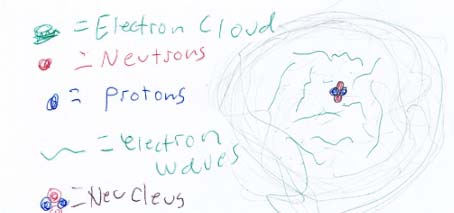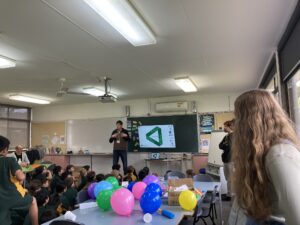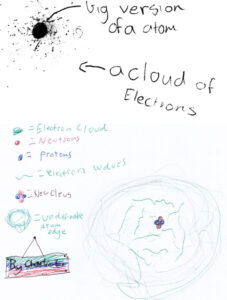Widening the reach of quantum teaching towards a ‘quantum savvy’ Australia
In 2023 FLEET developed a hands-on workshop to engage primary school students with quantum physics, talking about how electricity and circuits work at the quantum level.
Primary students can learn quantum physics, so why not teach it?
Pre- and postworkshop evaluation activities embedded in the nine quantum circuit workshops we ran this year have helped FLEET understand the impact and effectiveness of the program. They show that primary school students:
- Can successfully conceptualise the quantum model of an atom and understand that electrons have a wave-like behaviour
- Learned that the flow of electrons is necessary to generate electrical energy
- Began to conceptualise the nature of electrical resistance at the quantum level and could link this to FLEET’s mission to develop low-energy electronics
- Could think critically about the unsustainable energy consumption of digital technologies.
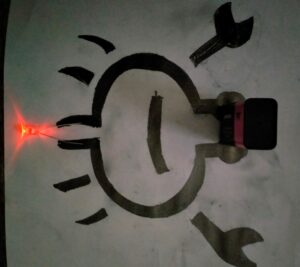
Quantum circuits exercise encourage students to ‘draw’ electrical circuits using electrically-conductive graphite ‘wires’ using a simple pencil
Why teach quantum to primary school (or non-science-focused secondary school) students?
Australia’s future industries will include a higher proportion of quantum technologies.
FLEET’s part towards building the quantum workforce that will support such a future includes an impressive 135 quantum-skilled higher degree by research graduates.
But we believe there is more we can do towards building a quantum-savvy workforce and quantum-savvy community. We believe that process begins well before ‘Quantum 101’ in a university physics degree.
“There are many ‘opportunities’ to help teach quantum at primary school level,” says FLEET Outreach Coordinator Dr Jason Major, who developed the primary schools program.
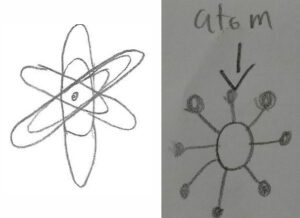
Primary-age students are able to grasp the concept of a ‘quantum atom, with visualisations of an atom shifting from these ‘Bohr’ type models with hard, certain electrons, before discussions…
“The world we inhabit and interact with exists because of quantum physics. Everything from mobile phones (superposition and band theory) to solar panels (energy quantisation) exist because of our understanding of quantum physics. Even energy from the Sun only occurs because of quantum physics (tunneling).”
“Despite this, there is a disconnect between science taught in schools and science of the modern world. Our primary school curricula lack any topics on quantum concepts.”
FLEET’s quantum circuits workshop, made available to schools via the FLEET Schools web resource, will help primary students build familiarity with quantum concepts and the physical reality of how the world works.
Guided role-play exercises engage students’ minds and bodies simultaneously in understanding atomic structure and how electrical resistance works at the quantum level. Students apply this knowledge to a graphite-circuit activity, using heavy pencils to draw circuits using electrically-conductive graphite ‘wires’ to connect an LED and 9 V battery.
Discussions and activities before and after these exercises support the conclusion that the workshops are effective.
For example, there is a distinct shift in the way students interpret the atom. Drawings of atoms made by students before the workshop show either classic, cartoon Bohr model atoms (electrons in distinct orbits around the nucleus), abstract blobs, or something the resembles a virus. Preworkshop drawings usually also lack any labelling of protons, neutrons and electrons.
In the postworkshop drawings, students’ conceptualisation shifts towards a quantum model, where the position of the electrons around the nucleus resembles a cloud and their precise position is uncertain, or is based on probabilities. Electrons are more often described and are drawn as waves.

